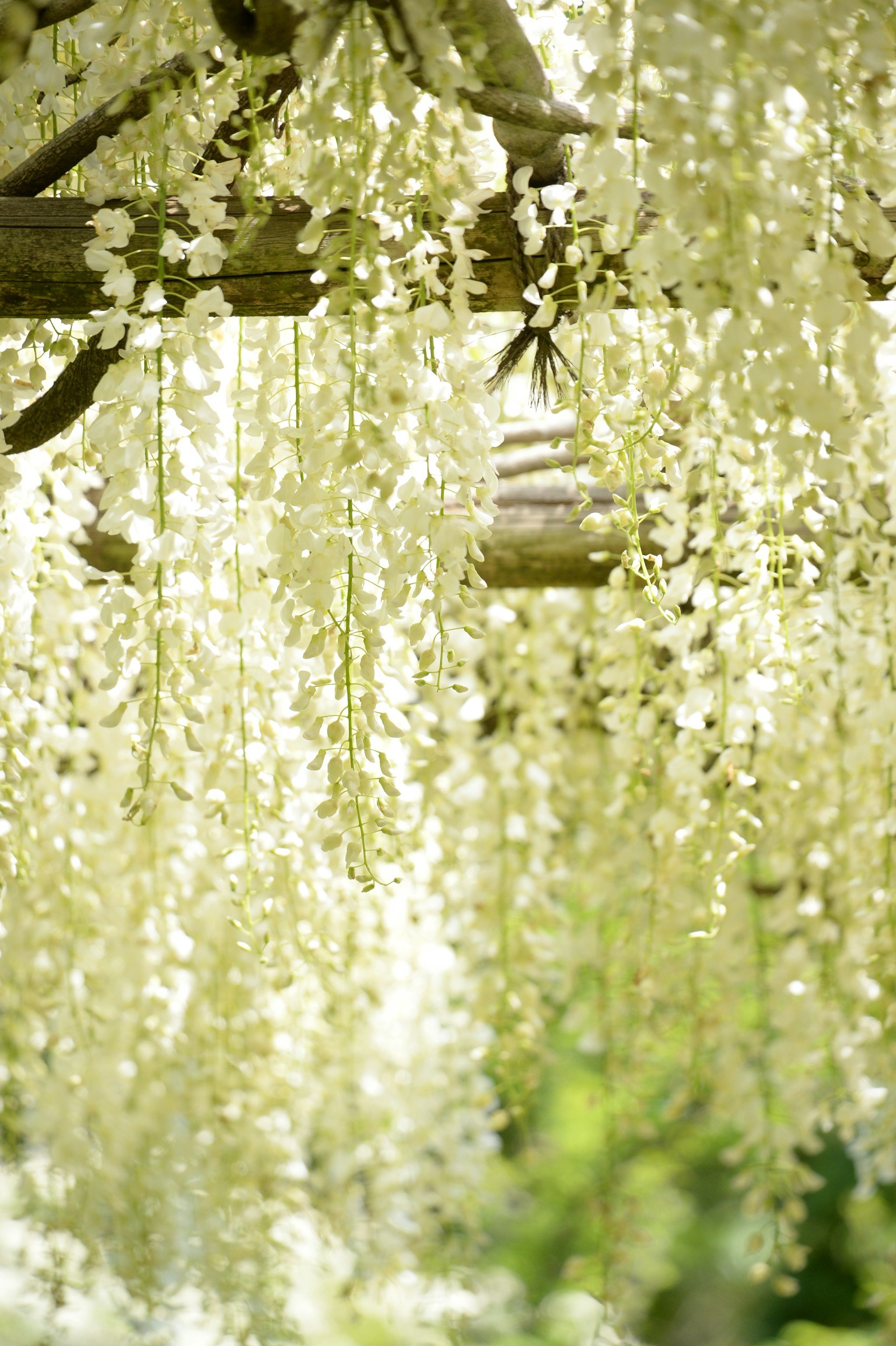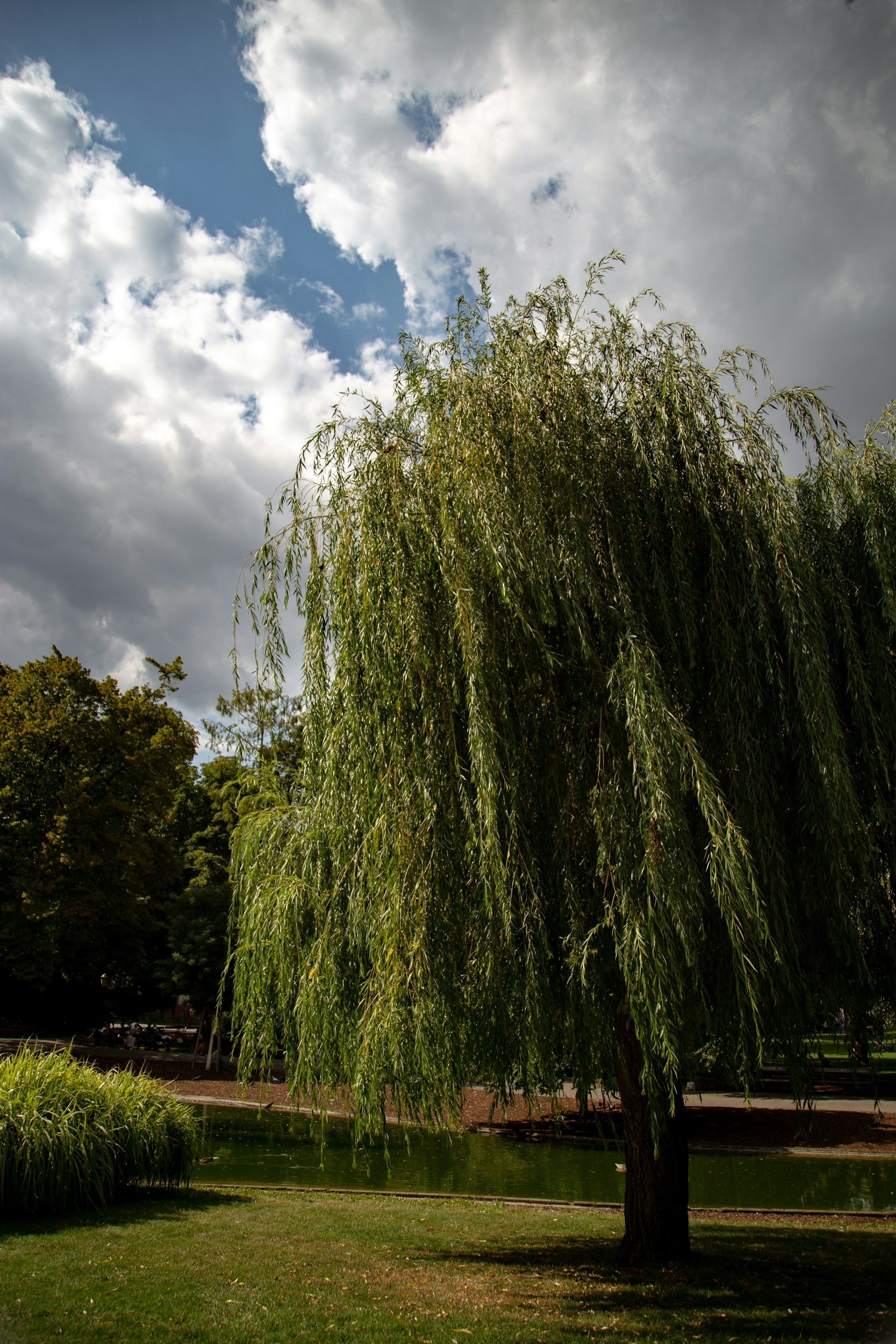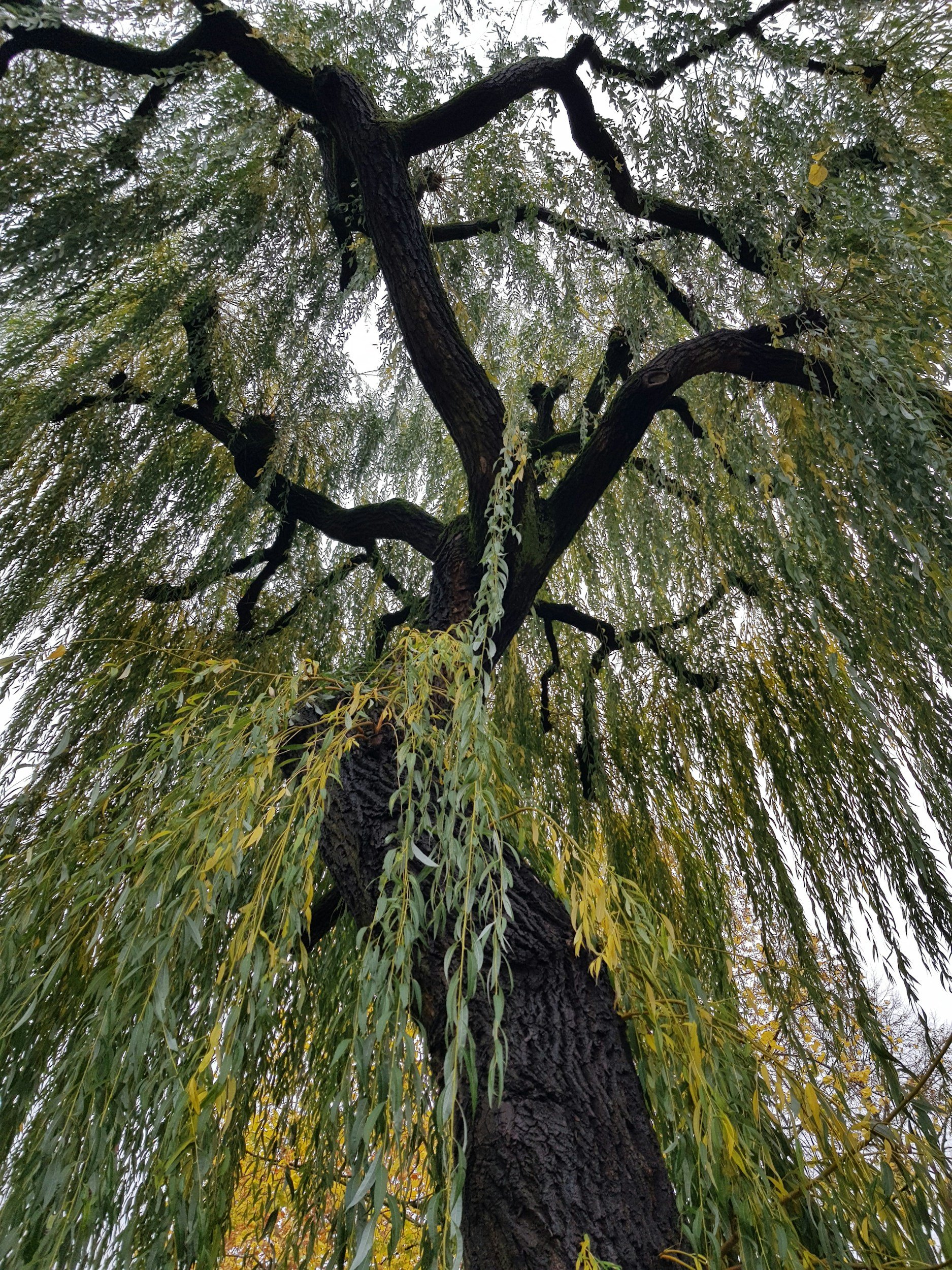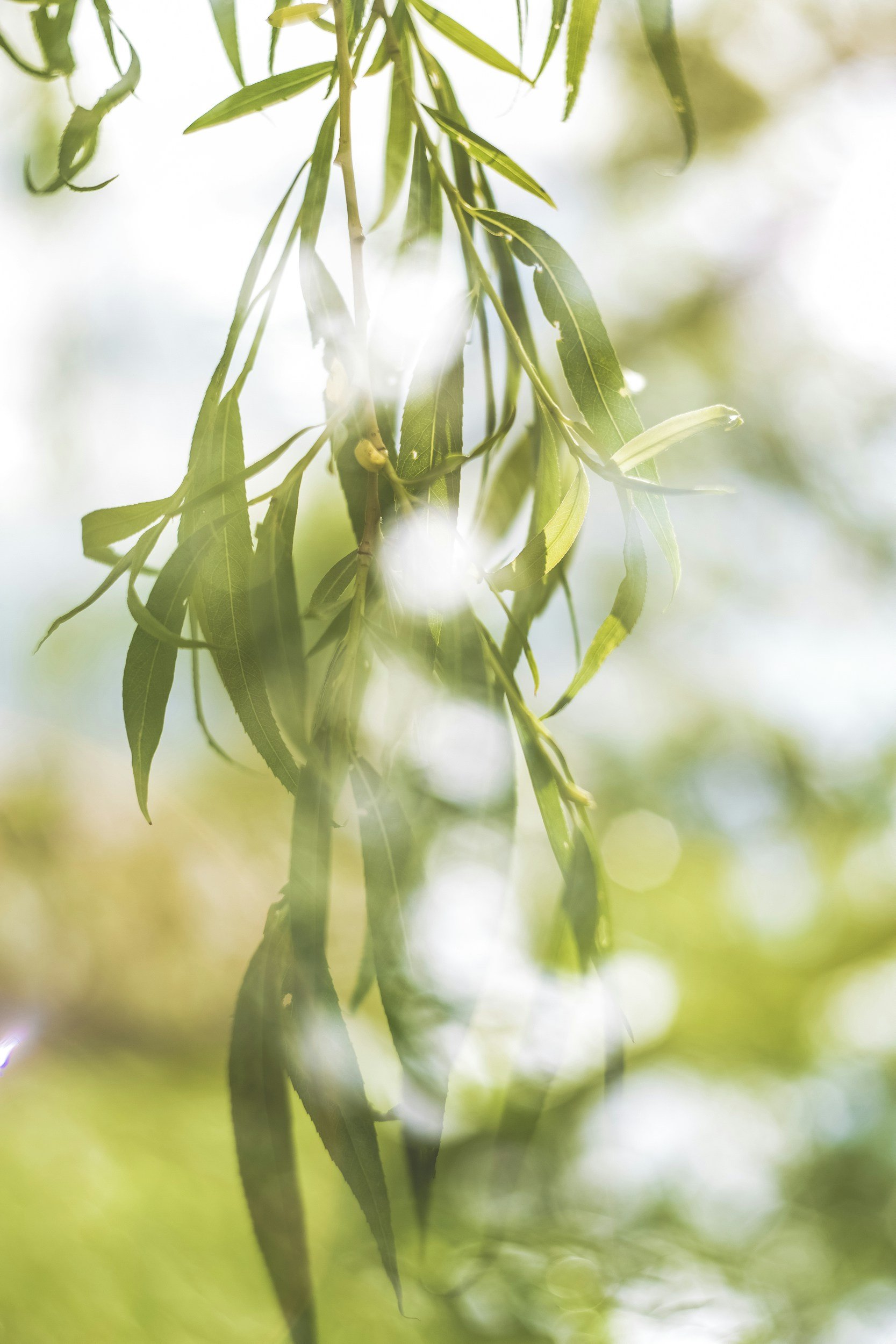
White Willow
White Willow
(Salix alba)
White willow (Salix alba) is the classic “herbal aspirin” tree, long used for aching, inflamed, or hot conditions. Its bark contains salicylate-rich constituents that ease pain, support circulation, and cool the system. A traditional choice for headaches, rheumatic pains, and fevers, especially in broader, holistic formulas.
Plant Family
Salicaceae
Other significant names
European willow.
Parts used
Cortex (Bark)
Typical forms of prescription
Decoction
Tincture
Wash
White Willow (Salix alba) - Clinical Snapshot
Primary Actions
Anti-inflammatory
Analgesic (pain-relieving)
Antipyretic (fever-reducing)
Astringent
Antirheumatic
Tonic
Febrifuge (reduces fever)
Stomachic (supports digestion)
Diuretic
Antiseptic
Sedative
Bitter (stimulates digestion)
Primary Indications
Traditionally used for:
Fever, colds, and influenza
Gout, arthritis, and rheumatism
Muscular and joint pain, including tendonitis, bursitis, and sprains
Systemic connective tissue disorders involving inflammation (e.g., ankylosing spondylitis)
Menorrhagia (heavy menstrual bleeding)
Weak or sluggish digestion
⚠️Cautions / Safety⚠️
Use with caution in individuals with aspirin sensitivity due to the presence of salicylates.
Not recommended during pregnancy or breastfeeding.
Avoid in children, especially due to the risk of salicylate-related complications.
May enhance the effects of anticoagulant and antiplatelet medications. Use cautiously with blood thinners.
Use with care alongside NSAIDs, as effects may be amplified.
Salix alba
Phytochemistry and Pharmacology
-
Includes: Salicin, salicortin, fragilin
Action: Analgesic, anti-inflammatory, antipyretic
Use: These are the primary active compounds in white willow bark. Salicin, once metabolised by the liver into salicylic acid, provides a milder, slower-onset pain relief than aspirin, but with fewer gastrointestinal side effects. Used in headaches, muscle pain, arthritis, rheumatic complaints, and fevers.
-
Action: Astringent, anti-inflammatory, antimicrobial
Use: Tannins contribute to tissue toning and inflammation reduction, supporting white willow’s use in sore throats, diarrhoea, bleeding gums, and minor skin wounds. They also enhance its astringency in topical and internal applications.
-
Includes: Isoquercitrin, naringenin, luteolin
Action: Antioxidant, anti-inflammatory, capillary-protective
Use: Flavonoids help reduce oxidative stress, support vascular tone, and add to white willow’s anti-inflammatory effects — especially helpful in chronic joint or soft tissue inflammation.
-
Includes: Salicortin
Action: Anti-inflammatory, antirheumatic
Use: These glycosides support musculoskeletal health, particularly in stiff joints, tense muscles, and recovery from overuse injuries.
Traditional Use
Willow bark has a long-standing global reputation as a natural remedy for pain and fever. Its use dates back thousands of years, with references in ancient Greek, Egyptian, and Chinese medicine. Traditionally, it was used in bark decoctions to reduce fever, soothe inflammation, and ease various aches and pains.
Clinical Discussion
White willow is famously known as the herbal inspiration for aspirin. Although its traditional use spans centuries, it received formal attention in the late 18th century when Reverend Edward Stone noted its bitter taste and its preference for damp, marshy environments, traits that reminded him of Cinchona bark, the source of quinine. Hoping it might treat malaria, he instead discovered its fever-reducing properties and conducted one of the first recorded clinical trials in England, using willow bark on 50 patients. In 1829, scientists isolated salicin from willow, a compound later refined into salicylic acid. This eventually led to Bayer's synthesis of acetylsalicylic acid, better known as aspirin, in 1897.
In modern herbal medicine, willow bark is typically dried and used in decoctions or tinctures to relieve headaches, muscular and arthritic pain, and reduce fevers in cold or flu cases. While Salix alba is the most commonly used species, other willows also contain varying amounts of salicin.
Cultivation & Harvesting
Harvest the bark from branches at least two years old. Strip the bark carefully, avoiding damage to the main trunk, and dry thoroughly before tincturing or storing for later use.
Key Botanical Features of White Willow (Salix alba)
Growth
Salix alba is a fast-growing, deciduous tree native to Europe and western Asia.
It typically reaches 10–25 metres (33–82 feet) in height and develops a graceful, upright or spreading crown.
Branches are long, slender, and flexible, often arching downward in mature trees.
Bark on young trees is smooth and grey-brown, becoming deeply fissured and rough with age.
Roots
Possesses a wide-spreading, fibrous root system that anchors well in wet or waterlogged soils.
Roots are particularly effective in stabilising riverbanks and controlling erosion.
Tolerant of periodic flooding and waterlogging.
Leaves
Arrangement: Alternate along the stems.
Shape: Long and narrow (lanceolate), tapering to a point.
Size: Typically 5–10 cm long and 1–1.5 cm wide.
Colour: Silvery-white on the underside due to fine hairs; upper surface is pale to medium green.
Surface: Finely toothed margins; slightly silky texture, especially when young.
Leaves give the tree its characteristic silvery appearance in the breeze.
Flowers
Type: Catkins (unisex), with male and female flowers on separate trees (dioecious).
Inflorescence: Slender, cylindrical catkins borne on short stalks in early spring, before the leaves emerge.
Colour: Male catkins are yellowish due to prominent stamens; female catkins are greenish.
Pollination: Wind-pollinated, though early bees may visit male catkins.
Fruit & Seeds
Type: Capsules that split open to release numerous tiny seeds.
Seed dispersal: Each seed is surrounded by fine, silky hairs that allow it to travel on the wind.
Viability: Seeds must germinate quickly in moist soil, usually within days of dispersal.
Adaptations
Thrives in damp soils, particularly along riverbanks, lakesides, and marshes.
Fast-growing and tolerant of pruning, making it ideal for coppicing and habitat restoration.
Strongly regenerative, cut branches readily root in moist ground.
Acts as a nurse species in riparian restoration projects due to its quick canopy formation and erosion control.
Sustainability/Conservation
Not at risk and widely cultivated across temperate regions.
Readily regenerates from cuttings and responds well to managed harvesting.
Cultivation supports biodiversity by providing habitat and early pollen for insects.





Sources
Bartram, T. (1998). Bartram’s encyclopedia of herbal medicine. Constable.
Fisher, C. (2018). Materia medica of western herbs (Rev. ed.). Aeon Books.
Hedley, C., & Shaw, N. (2020). A herbal book of making and taking. Aeon Books.
Hoffmann, D. (2003). Medical herbalism: The science and practice of herbal medicine. Healing Arts Press.
McIntyre, A. (2019). The complete herbal tutor (Revised & expanded ed.). Aeon Books.
Royal Botanic Gardens, Kew. (n.d.). Plants of the World Online. https://powo.science.kew.org/
Mills, S., & Bone, K. (2013). Principles and practice of phytotherapy: Modern herbal medicine (2nd ed.). Churchill Livingstone; Elsevier.
Barnes, J., Anderson, L. A., & Phillipson, J. D. (2013). Herbal medicines (3rd ed.). Pharmaceutical Press.
Benzie, I. F. F., & Wachtel-Galor, S. (Eds.). (2011). Herbal medicine: Biomolecular and clinical aspects (2nd ed.). CRC Press; Taylor & Francis.
Evans, W. C. (2009). Trease and Evans’ pharmacognosy (16th ed.). Elsevier.
Disclaimer: This page is for educational purposes only. Consult a qualified medical herbalist before using herbs, especially during pregnancy, when trying to conceive, while breastfeeding, for medical conditions, or with children.
Read the full disclaimer → Medical Disclaimer.




